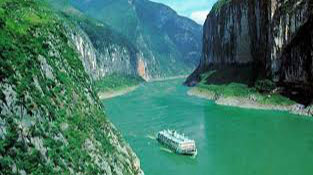China is a country with vast territory and many geological landforms. It has 49 world geological parks, ranking first in the world. These geological parks are widely distributed, covering volcanic landforms, karst landforms, Danxia landforms and other types, such as the volcanic wonders of Changbai Mountain World Geopark and the dinosaur fossil Great Wall of Yunyang World Geopark. They show the unique charm of earth evolution and biodiversity. They are not only a treasure house for geological research, but also promote regional development through trekking adventures and ecotourism. It truely match the words of “green water and green mountains are gold and silver mountains”
- – Huangshan World Geopark (Anhui): Famous for its granite landforms and Quaternary glacial (第四纪冰川) deposits, it is known as the “artistic temple of granite carving”.
- – Lushan World Geopark (Jiangxi): It has geological sections from the Paleoproterozoic era (古元古代) to the Quaternary period (第四纪), and is known as the “geological yearbook of glacial movement”.
- – Danxiashan World Geopark (Guangdong): The place where the global “Danxia landform (丹霞地貌)” was named, famous for its red cliffs and ecological secrets.
- – Guilin Landscape World Geopark (Guangxi): famous for its typical karst landform and landscape, it is a model of the integration of nature and humanity.
- – Yuntaishan (云台山) World Geopark (Henan): Famous for its northern karst landforms and canyon landscapes, it is a living specimen for studying neotectonic movements.
- – Funiushan (伏牛山) World Geopark (Henan): Famous for its watershed landforms and forest oxygen bars, it is an important ecological barrier in the Central Plains.
- – Zhangjiajie (张家界) World Geopark (Hunan): famous for its quartz sandstone peak forest landform, known as the “Fantasy Forest of Quartz Sandstone”.
- – Fangshan (房山) World Geopark (Beijing, Hebei): Integrating geological relics and cultural landscapes, including the Zhoukoudian Peking Man Site and the Shihuadong Karst Cave Group, showing the combination of human civilization and natural wonders.
- – Yanqing (延庆) World Geopark (Beijing): Famous for Quaternary glacial relics and karst landforms, it is an important base for geological science popularization.
- – Arshan (阿尔山) World Geopark (Inner Mongolia): Famous for hot springs and volcanic landforms, it is an important area for volcanic geological research.
- – Changbai Mountain (长白山) World Geopark (Jilin): famous for its volcanic landforms and Tianchi landscape, it is a model for volcanic geological research.
- – Zhangye (张掖) World Geopark (Gansu): famous for its Danxia landform and colorful hills, it is a typical example of geological evolution.
- – Kunlun Mountain World Geopark (Qinghai): famous for its alpine landforms and glacial relics, it is an important area for geological research on the Qinghai-Tibet Plateau.
- – Qinghai Kanbula (坎布拉) World Geopark (Qinghai): famous for its Triassic deep-sea sedimentary stratigraphic sections.
- – Chongqing Yunyang (云阳) World Geopark (Chongqing): features the Great Wall of Dinosaur Fossils and tiankeng karst landforms.
- – Shilin (石林) World Geopark (Yunnan): Famous for its sword-shaped karst landforms, it is a typical area for studying karst evolution.




